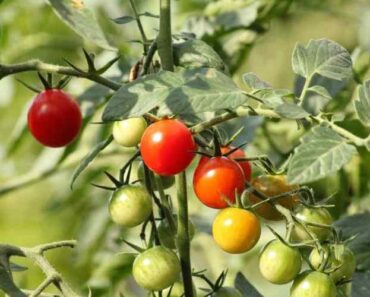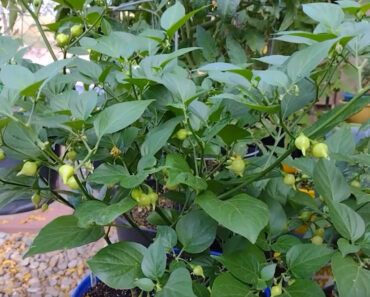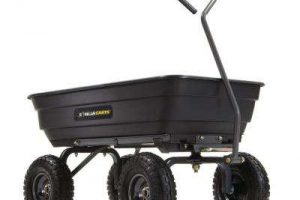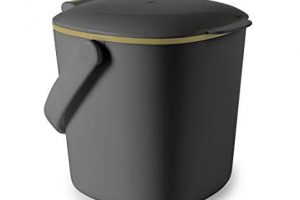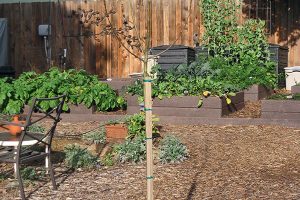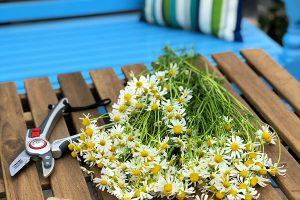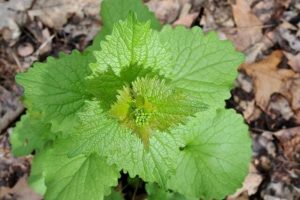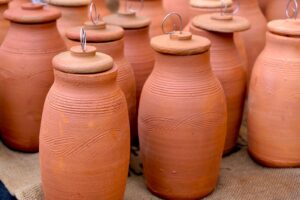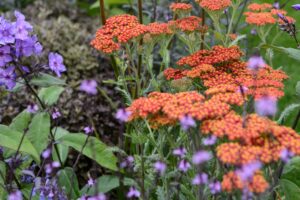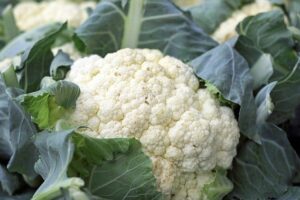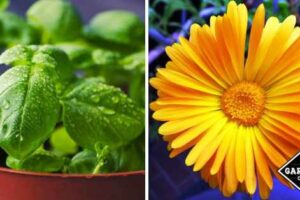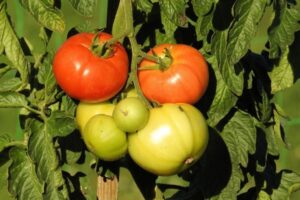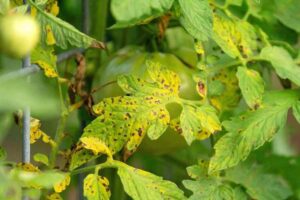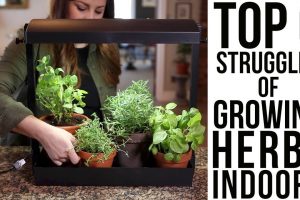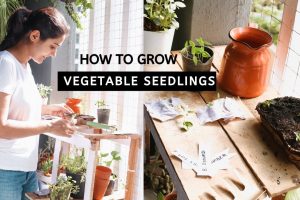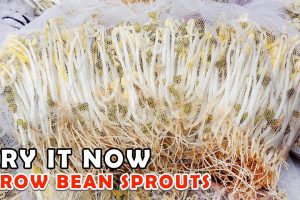
By Jennifer Poindexter
Are you interested in growing your own herbs and vegetables to include in Asian cuisine? If this is something you’re interested in, I have a treat for you.
I’ve compiled a list of crops you should include in your garden for this style of cooking. I’ll share their growing conditions to help build a foundation for each plant in your garden.
Whether cooking Asian dishes is a part of your heritage or is a new style of cooking you’re interested in exploring, let this list guide both your cooking and gardening journey.
Here’s a list of herbs and vegetables to grow for Asian dishes:
What You’ll Learn:
- The best herbs and vegetables to grow for Asian recipes, including their growth conditions, harvesting times, and unique flavor profiles.
- Options for a range of gardening methods, such as outdoor vegetable gardens, perennial herbs, indoor container gardening, and even aquatic herb cultivation.
- Details on how these plants can enrich and diversify your home-cooked Asian dishes.
Herbs and Vegetables for Asian Dishes
Herbs are a wonderful way to brighten a meal. Vegetables are a great way to add nutrients, flavor, and texture to a dish.
If you’re looking for some of the best herbs and vegetables to grow for your Asian recipes, consider a few of the following options:

1. Daikon Radish
Daikon radishes are elongated, white radishes with a sweeter flavor than traditional radish varieties. These are an annual crop that prefer cooler temperatures.
When growing daikon radishes, be sure to provide full sunlight, well-draining soil, and try to grow when the temperature is around 50-degrees Fahrenheit. Expect to receive a harvest in approximately two months.
2. Chinese Mustard Greens
Chinese mustard greens are an herb that can be grown as a perennial. In some areas, gardeners treat them as an annual. In some cases, they’re even grown as a biennial. Expect these plants to remain hardy in planting zones six through eleven.
Should you add this plant to your garden, be sure to supply a growing location with nutrient-rich, well-draining soil, ample sunlight, and cooler temperatures. You should receive a harvest in about two months.
3. Bok Choy
Bok choy grows in leafy heads. Though it’s a biennial plant, most gardeners treat it as an annual. This plant does well in zones two through ten.
If you’re interested in adding this plant to your garden, select a location with full sunlight and nutrient-dense soil. Should you live in a warmer climate, provide afternoon shade to avoid bolting as these plants prefer cooler temperatures. Bok choy is another fast-growing crop that produces in under two months in most scenarios.
4. Lemongrass
Lemongrass is a bushy plant with a wonderful flavor. If you’re interested in adding it to your garden, you’ll be glad to know it’s a tender perennial. Expect this crop to remain hardy in planting zones nine and ten.
Yet, you may also enjoy it as an annual in other growing locations. Lemongrass may be grown in the ground or in a container and should produce a harvest in around three months. This plant also needs ample sunlight and well-draining soil that’s rich in nutrients.
5. Thai Bird’s Eye Chili Peppers
Thai bird’s eye chili peppers are known for having a pepper flavor with a hint of fruit. If this is of interest to you, be prepared to plant it each year as this crop is only a perennial in planting zones eleven and twelve.
However, if you have a growing location with plenty of sunlight and good quality, well-draining soil, it should do well for you. You may even grow this plant in a container inside your home. Thai bird’s eye chilis typically produce a harvest in three months.
6. Water Spinach
Water spinach is an interesting plant. It’s considered an aquatic herb because it grows in overly saturated situations. This herb is a perennial in planting zones seven through eleven. It’s known for having a flavor between watercress and spinach.
If this is of interest to you, supply a growing location with temperatures in the mid- 70’s (Fahrenheit). This plant prefers to grow in shallow bodies of water or in beds with evenly and consistently damp soil. It also needs full sunlight. Expect a harvest two months after planting.
7. Edamame
Edamame is a legume plant. It’s an annual and can be grown in all planting zones in areas with full sunlight. This plant prefers warmer temperatures around 70- to 80-degrees Fahrenheit.
If you’re looking for an ideal growing location, select an area with bright lighting and well-draining soil. You should be able to harvest edamame in seventy-five to one hundred days.

8. Thai Basil
Thai basil is a beautiful plant with green foliage and purple stems. This plant varies from most sweet basils as the harvest has more of a peppery flavor. If you’re interested in adding this herb to your garden, be sure to find a growing location with rich, well-draining soil and ample sunlight.
If you live in an area with hot afternoons, try to plant where Thai basil can receive bright morning light and afternoon shade. This herb is grown as an annual in most locations as it only remains hardy in zones ten and higher. Expect to harvest from this plant in approximately two months.

9. Galangal
Galangal is a close relative of ginger. They look similar, but the main difference is their flavor. Ginger has more of a peppery flavor where galangal has a hint of citrus in its flavor profile. If you’d like to grow this interesting plant, you’re in luck.
Though it’s only hardy in planting zones nine and ten, you may grow it as an annual in planting zones seven and eight. You may also grow it in a container as a houseplant year-round. It’s vital that you supply this plant with well-draining soil, warmer temperatures, plenty of water, and a shaded growing location. You may harvest galangal in three months.
10. Shishito Peppers
Shishito peppers are smaller green peppers with a sweet flavor. Yet, they’re also unpredictable. Every now and then you’ll pick one that is quite spicy. If you’d like to grow a flavorful surprise in your garden, pick the right growing area for your planting zone.
These peppers remain hardy in zones nine and ten. In other growing locations, you may grow them as an annual, but be sure no matter where you grow them they receive at least eight hours of sunlight each day and well-draining soil. You can harvest shishito peppers in two months.

11. Chinese Cabbage
Chinese cabbage is sometimes referred to as Napa cabbage. If you’d like to include this variety of cabbage into your garden, select a growing location with full to partial sunlight and nutrient-dense, well-draining soil.
Most gardeners produce this crop as an annual and start harvesting their Chinese cabbage in about two months.

12. Yard Long Beans
Yard long beans are a tall crop that produce beans between 1- and 2-feet long. They’re native to Africa and considered an annual crop.
Yard long beans produce a harvest in about three months, but be sure to provide adequate growing conditions. They need a growing location with temperatures around 80-degrees Fahrenheit, plenty of sunlight, and well-draining soil that’s of good quality.

13. Kaffir Lime Leaves
Kaffir limes are a unique crop. These plants produce green, bumpy limes that are common in Thai cuisine. The leaves of these plants are used in making curry paste. This plant grows mainly in subtropical climates, so you’ll probably treat it as a houseplant.
If so, grow your kaffir limes indoors in a container filled with well-draining soil and in an area with bright light. You may harvest the leaves at any time the plant is producing mature fruit.
14. Chinese Chives
Chinese chives are also commonly called garlic chives for their intense garlic flavor. However, this is a beautiful plant with lush, green foliage.
If you’re interested in adding this plant to your garden, supply a growing location with full sunlight and rich, well-draining soil. They should be ready to harvest in two months and are perennial in planting zones four through nine.

15. Mung Bean Sprouts
Mung beans are small green legumes, but we’re going to discuss the sprouts of this plant. These make a great crunchy addition to salads or stir fries.
You can sprout these beans indoors, any time of year. If you’re looking for a simple way to grow crops for Asian inspired meals, mung bean sprouts may be a great place to start.
You have fifteen different options for vegetables and herbs to grow in your garden to enjoy in your Asian dishes. There are items on this list for many methods of gardening and some which can be produced year-round.
Pick what works best for you and provides the flavor you desire. Then start growing your own crops for your Asian inspired meals.
Key Takeaways:
- Growing your own herbs and vegetables can greatly enhance the authenticity and freshness of your Asian cuisine. Key options include Daikon Radish, Chinese Mustard Greens, Bok Choy, Lemongrass, and Thai Basil, among others.
- Each plant requires specific growth conditions and offers unique flavors. For example, Galangal needs well-draining soil, warmer temperatures, and a shaded location, while Thai Basil thrives in rich soil with ample sunlight and afternoon shade.
- Gardening options are diverse, ranging from traditional outdoor vegetable and herb gardens to indoor container gardening and aquatic herb cultivation. Understanding the best environment for each plant ensures a successful harvest.
- The variety of herbs and vegetables suitable for Asian cooking extends beyond the common choices, incorporating lesser-known but flavor-rich options such as Thai Bird’s Eye Chili Peppers, Water Spinach, Shishito Peppers, Yard Long Beans, Kaffir Lime Leaves, and Mung Bean Sprouts.
- Growing these herbs and vegetables provides the opportunity to incorporate fresh, homegrown ingredients into your meals, giving your Asian dishes an authentic and enriched flavor profile.
Asian Dishes: Herbs and Vegetables Quick Reference Chart
| Plant | Plant Type | Growing Conditions | Harvest Time (Approx.) | Flavor Profile |
|---|---|---|---|---|
| Daikon Radish | Annual | Full sunlight, well-draining soil, cool temps | 2 months | Sweeter than common radish |
| Chinese Mustard Greens | Perennial/Annual/Biennial | Nutrient-rich, well-draining soil, ample sunlight, cool temps | 2 months | Hardy in zones 6-11 |
| Bok Choy | Biennial (treated as Annual) | Full sunlight, nutrient-dense soil, cool temps | < 2 months | Mild, cabbage-like |
| Lemongrass | Tender Perennial | Ample sunlight, nutrient-rich, well-draining soil | 3 months | Citrusy, light |
| Thai Bird’s Eye Chili Peppers | Perennial (in zones 11-12) | Plenty of sunlight, good quality, well-draining soil | 3 months | Peppery with a hint of fruit |
| Water Spinach | Aquatic Perennial | Full sunlight, saturated soil, mid-70s temps | 2 months | Between watercress and spinach |
| Edamame | Annual | Full sunlight, well-draining soil, warm temps | 75-100 days | Fresh, beany |
| Thai Basil | Annual (hardy in zones 10+) | Rich, well-draining soil, ample sunlight, afternoon shade | 2 months | Peppery compared to sweet basil |
| Galangal | Perennial (hardy in zones 9-10) | Well-draining soil, warmer temps, plenty of water, shade | 3 months | Hint of citrus |
| Shishito Peppers | Perennial (hardy in zones 9-10) | At least 8 hours of sunlight, well-draining soil | 2 months | Sweet, occasionally spicy |
| Chinese Cabbage | Annual | Full to partial sunlight, nutrient-dense, well-draining soil | 2 months | Mild, crunchy |
| Yard Long Beans | Annual | Plenty of sunlight, good quality, well-draining soil, warm temps | 3 months | Mild, similar to green beans |
| Kaffir Lime Leaves | Perennial (indoor) | Bright light, well-draining soil | Any time when fruiting | Key ingredient in curry paste |
| Chinese Chives | Perennial (hardy in zones 4-9) | Full sunlight, rich, well-draining soil | 2 months | Intense garlic flavor |
| Mung Bean Sprouts | Annual | Indoor sprouting, any time of year | Fast (a few days) | Crunchy, fresh addition to salads and stir fries |
Learn More About Growing Herbs and Vegetables for Asian Dishes
https://s3.wp.wsu.edu/uploads/sites/2053/2012/11/37AsianVegetables.pdf
https://www.uky.edu/ccd/sites/www.uky.edu.ccd/files/asianmarket.pdf
The post 15 Herbs and Vegetables to Grow for Asian Dishes appeared first on Gardening Channel.




